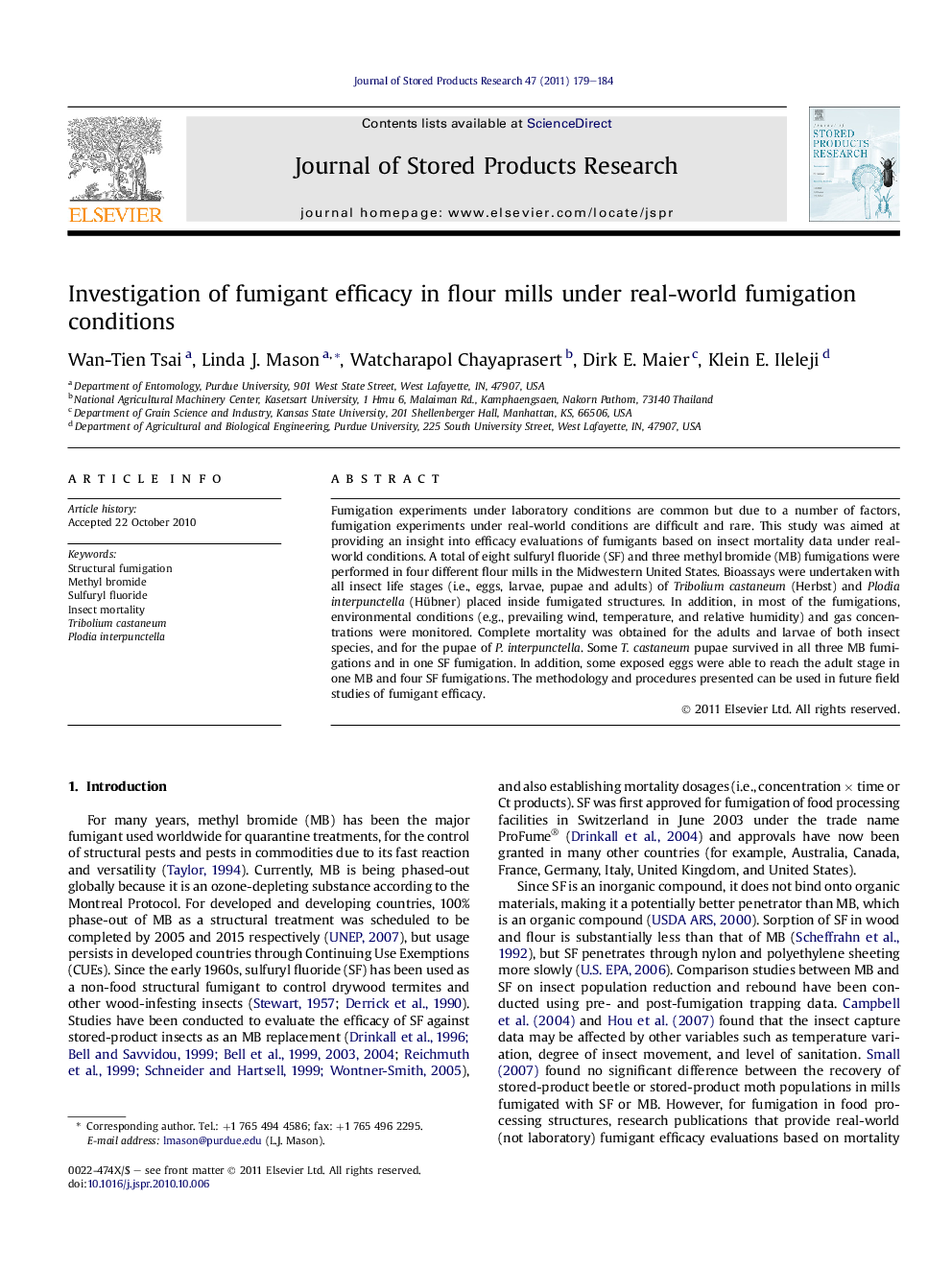| Article ID | Journal | Published Year | Pages | File Type |
|---|---|---|---|---|
| 4517204 | Journal of Stored Products Research | 2011 | 6 Pages |
Fumigation experiments under laboratory conditions are common but due to a number of factors, fumigation experiments under real-world conditions are difficult and rare. This study was aimed at providing an insight into efficacy evaluations of fumigants based on insect mortality data under real-world conditions. A total of eight sulfuryl fluoride (SF) and three methyl bromide (MB) fumigations were performed in four different flour mills in the Midwestern United States. Bioassays were undertaken with all insect life stages (i.e., eggs, larvae, pupae and adults) of Tribolium castaneum (Herbst) and Plodia interpunctella (Hübner) placed inside fumigated structures. In addition, in most of the fumigations, environmental conditions (e.g., prevailing wind, temperature, and relative humidity) and gas concentrations were monitored. Complete mortality was obtained for the adults and larvae of both insect species, and for the pupae of P. interpunctella. Some T. castaneum pupae survived in all three MB fumigations and in one SF fumigation. In addition, some exposed eggs were able to reach the adult stage in one MB and four SF fumigations. The methodology and procedures presented can be used in future field studies of fumigant efficacy.
► Leakage rates of methyl bromide and sulfuryl floride varied during field trials. ► Environmental conditions and mill characteristics affect leakage rates. ► Some insect survival, primarily the egg stage, occurred with fumigations using both products. ► Methodology was developed that can be used in field evaluations of fumigant efficacy.
